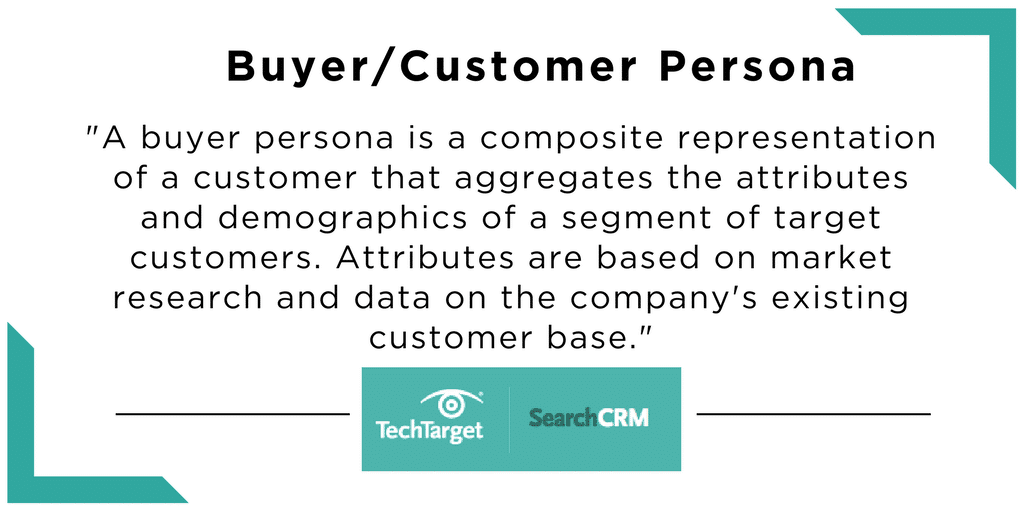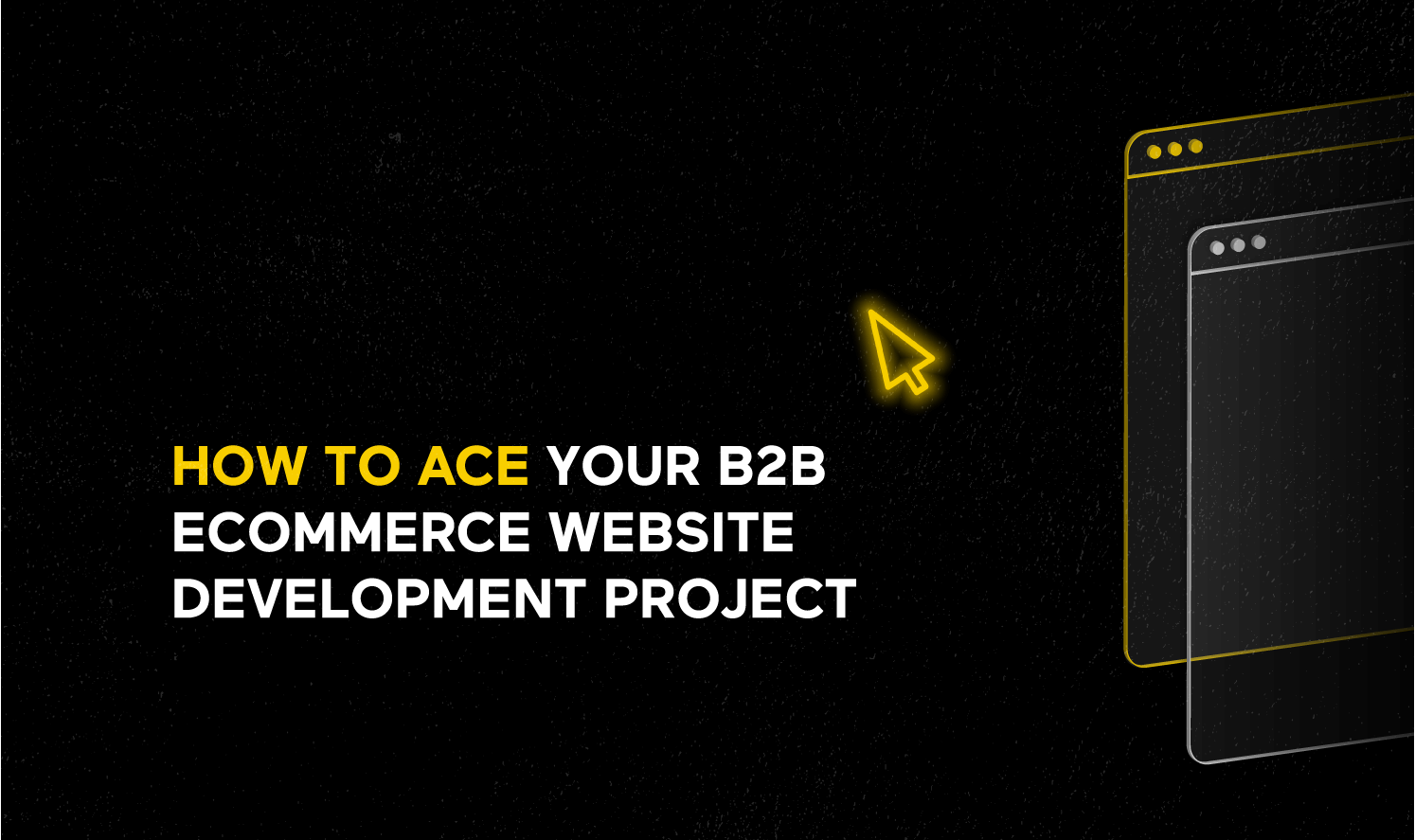
The Four Stages of Designing a Website for Buyer Personas
If customers are the future of content marketing, using buyer persona information when building a website will position your company one step ahead of the competition.
There are four main stages to consider when planning a web design makeover to attract potential customers:
Stage One: Awareness
Buyers/customers in the awareness stage are just beginning their search for a product or service. Many brands shy away from creating landing pages for these types of searches because they don’t lead to direct sales or conversions. Creating website pages for buyers at this stage (non-transactional) is a smart long-term strategy; they will build brand awareness, trust with prospects, and drive more website traffic.
What types of content target prospects at the awareness stage?
Awareness content is often published within Resources section:
- White Papers
- Case Studies
- eBooks
- Videos
- Pre-recorded Webinars
If you’re unsure of the type of content that customers are searching for in the awareness stage, perform some research with the following resources:
- Your customer service and sales team
- Reddit and Quora
- Forums & Social Media Groups
An experienced design team can help you leverage these assets with clear layouts and messaging that invite buyers to click and engage by funneling them into action with color contrasting, minimalistic design, and proven design strategies.
Stage Two: Consideration
Buyers/customers in the consideration stage are looking for trust signals, value, deals, and easy access to products and/or services. They’ve done most of their research, and they’re comparing the brands at the top of their list.
When planning out landing pages for prospects at this stage, make sure each web page can be easily located through the main navigation or the homepage.
- Reviews and Testimonials
- Awards and Brand News
- Free Trials
- Video Tutorials or Training Webinars
- Help Centers and FAQ section
Your website design team can create soft call to action options that invite visitors in the consideration stage to move into the conversion stage. The consideration stage is the time to stand out from the crowd, make sure your design team understands the importance of this content in gaining and keeping website visitor attention. Explain to them from your research what messaging will resonate with your customers. Prepare copy in advance so that the design team can design around the copy and present the funnel into the conversion phase.
Stage Three: Conversion
Most brands don’t have a problem creating landing pages and website content that relate to their conversion keyword list. While it’s tempting to build up a website with conversion content, too much of a good thing can have a negative impact. Creating web pages that target low-level (low ROI value) buyers will drive ROI down in the long run.
Identify conversion paths for your top-level personas and share the information with your design team. Design and messaging for a C-level audience will look very different than a landing page designed for a one-time e-commerce customer, and an experienced design team will understand the difference.
When outlining your conversion design preferences, consider these landing page suggestions to help them click, call, and convert:
- Device Specific. What type of device are your most valuable personas using when they convert? Make sure the web page design supports these devices, the content loads quickly, and forms are short. You can get this information from your existing Google Analytics if you have it set up.
- Click to Call. Every landing page designed for conversions should have a click-to-call option, not just the homepage.
- Keyword Modifier Pages. Also known as the “long tail” option, make sure your website has plenty of pages that offer free trials, tools, and calculators, free audits, worksheets, etc. as extensions of your most popular content.
- Multiple call to actions (CTA) placed on the page to funnel the user into the same action. While you don’t want to offer different CTA options when working on web design of a page, giving visitors the option to click through and engage in more than one section will increase conversions, especially on web pages with higher word counts or large images or when the user is scrolling a lot.
Stage Four: Retention
Retention landing pages are the most underutilized asset for websites targeting buyer personas. Companies are so focused on attracting new visitors and new leads; they forget that their current customers might be going back to search engines for the next phase of their project. Email campaigns are often the focus of retention strategies, but website content should appeal to past customers who are likely to purchase additional products or services in the future.
Here are a few examples of designing web sites for customer loyalty:
- Loyalty Programs
- New Releases & Products
- Interactive Content & Contests
- “Member Only” Deals and Services
- Product/Service Improvement and Upgrade Announcements
Design Backed by Data
Once your initial persona research is complete, dive into Google Analytics and compare your assumptions on buyer actions to what Google is showing to make sure they are correct. A successful website doesn’t launch in one day; it requires careful tracking and analysis to identify problems that can be fixed with a few simple design changes. For user tracking, make sure the following features are set up within Google Analytics:
Audience Reports
Audience Reports will help you track new vs. returning visitors, technology (devices), and users flow (the path users take through your site).
Funnels and Customer Journeys
Custom Funnels will help you identify sections of your site where prospects are dropping out of the buyer funnel.
Segment Filters
Segments allow you to gather data on a specific set of website users (returning visitors), date ranges, or user sessions.
Search Box
What are your website visitors searching for? Since keyword data no longer appears in Google Analytics, you can set up a search bar on your site and retrieve the data in your Analytics dashboard. Ask your designer to make it a priority so that you can begin tracking right away.
Designing a website for buyer personas will generate impressive returns, especially if you have access to buyer persona data within your CRM software. The customer journey is the future of web design, but it’s up to you to identify and define your most valuable online customers.
Crafting Connections: Strategies for Designing a Customer-Centric Website
As consumers navigate a digital realm brimming with options, the challenge for businesses lies not just in attracting but in retaining their audience. In this endeavor, the design of a website emerges as a pivotal factor—a silent architect shaping the digital experience, cultivating lasting connections, and influencing the trajectory of customer loyalty.
In this exploration, we delve into the profound strategies that define the art of crafting customer-centric websites. From understanding the nuanced expectations of modern consumers to orchestrating innovative designs with tech expertise, each facet plays a crucial role in building the foundations of loyalty.
1: Beyond Aesthetics - Navigating the Landscape of User-Centric Web Design
Understanding the Evolution of Consumer Expectations
It’s no longer sufficient for a website to be visually pleasing; it must intuitively respond to the user’s needs. Today’s consumers crave an experience that mirrors the fluidity of their lives—one that adapts, understands, and seamlessly aligns with their objectives. To meet these expectations, businesses must embark on a journey to comprehend the evolving landscape of user needs.
The foundation of user-centric design lies in empathy—an empathetic understanding of the user’s goals, challenges, and preferences. By walking in the shoes of the audience, designers can transcend the boundaries of conventional aesthetics and delve into the realm of meaningful experiences. This approach, rooted in empathy, sets the stage for crafting websites that not only captivate but truly resonate with users.
Tailoring the Web Experience for a Diverse Audience
In the current landscape, each user brings a unique set of expectations, motivations, and preferences to the digital table. Tailoring the user journey to accommodate this diversity becomes not just a strategy but a necessity.
Consider the meticulous user at the awareness stage, hungry for comprehensive service information and expert advice. The challenge is to provide a seamless journey from awareness to consideration, catering to the need for detailed insights and clarity at every turn.
Others, at different stages of the buying journey, seek a web experience that informs and inspires confidence in the decision-making process. The web design must adapt and resonate at each touchpoint, addressing the diverse needs of users without explicitly referring to specific personas.
2: Orchestrating Innovative Design with Tech Expertise
Orchestrating innovative design requires more than aesthetic creativity; it demands a symbiotic relationship with technology and a deep understanding of how it can elevate the user experience.
The Role of Tech Experts in the Design Landscape
At the heart of innovative website design lies the expertise of tech professionals. These individuals, akin to digital maestros, possess the prowess to transform concepts into interactive and seamless digital experiences. Their role extends beyond the conventional boundaries of development; they are the architects of a virtual world where design and technology coalesce to create something greater than the sum of their parts.
Consider the scenario where a user lands on a website with a visually striking interface. Behind this visual allure, tech experts have meticulously crafted the code, ensuring that the website not only looks appealing but functions flawlessly. This synergy between design and technology is where the magic of innovation unfolds.
Elevating Design with Elite Expertise
Hiring top tech experts, often representing the top 3% of their field, brings a level of mastery that goes beyond the ordinary. Their contributions extend beyond fixing bugs or implementing features; they are instrumental in pushing the boundaries of what is possible.
As technology evolves, so do the expectations of users. Elite tech talent is equipped not only to meet these expectations but to exceed them. They bring a forward-looking perspective, anticipating trends, and incorporating cutting-edge solutions that ensure a website remains not just relevant but ahead of the curve.
Real-World Examples of Tech Expertise in Action
Imagine a website that seamlessly integrates augmented reality features to enhance the user experience. From product visualization to interactive tutorials, the website becomes a playground where design and technology converge to create an immersive journey.
In this scenario, tech experts play a pivotal role. Their ability to harness the potential of augmented reality, coupled with an in-depth understanding of user behavior, results in an innovative design that captivates and engages. This exemplifies how tech expertise, when seamlessly woven into the design process, can transform a website from a static interface to a dynamic and interactive platform.
3: Harmony in Complexity - Seamless Integrations for a Unified User Experience
Navigating the complexities of integration is not merely a technical challenge but a strategic imperative to provide users with a unified and coherent experience.
Significance of Seamless Tech Integrations
In an era where users seamlessly transition between devices and platforms, the importance of seamless tech integrations cannot be overstated. Whether it’s incorporating e-commerce functionalities, third-party tools, or enhancing user engagement through social media integrations, the ability to weave these elements seamlessly into the fabric of a website is a hallmark of sophisticated design.
Integration Without Disruption: A Design Imperative
One of the key challenges in seamless integration lies in ensuring that the addition of new functionalities does not disrupt the existing user experience. The transition from one feature to another should be smooth, akin to a well-choreographed dance where each move complements the previous one.
In the context of user-centric design, this implies that every integration should contribute positively to the overall user journey. Whether it’s a chatbot providing real-time assistance or a loyalty program seamlessly integrated into the checkout process, these additions should enhance, not hinder, the user experience.
Imagine a corporate website that seamlessly integrates project management tools, allowing clients to track the progress of their projects in real-time. This integration not only streamlines communication but also provides transparency—a crucial factor in building trust with clients.
In another scenario, a content-focused website seamlessly integrates a user-friendly subscription management system. Users can effortlessly customize their content preferences, receive personalized recommendations, and seamlessly transition between free and premium content. This integration enhances user engagement while simplifying the user’s interaction with the platform.
4: Beyond Transactions - Cultivating Connections with Thoughtful Design
In the here and now, websites have transcended their role as transactional platforms. They have evolved into dynamic spaces where businesses not only showcase products or services but foster genuine connections with their audience. Cultivating these connections requires a shift from transaction-focused design to a more thoughtful and relationship-oriented approach.
Fostering Long-Term Relationships with Users
In the pursuit of customer loyalty, the journey extends far beyond a one-time transaction. Thoughtful design involves creating an environment where users feel valued, understood, and eager to return. This approach is akin to tending to a digital garden, nurturing relationships that bloom into enduring connections.
Consider the user who frequents a lifestyle blog. Beyond merely offering articles, the website is designed to understand the user’s preferences, serving personalized content that resonates with their interests. This thoughtful design transforms the website into a trusted companion, evolving from a transactional space to a personalized hub tailored to the user’s preferences.
Strategies for Relationship-Oriented Design
Thoughtful design encompasses a myriad of strategies aimed at deepening the connection between users and the website. One such strategy is personalization, where the website adapts its content and features based on the user’s behavior, preferences, and history of interaction.
Imagine a user revisiting an e-commerce site—the thoughtful design goes beyond remembering their purchase history. It extends to recommending complementary products, providing exclusive discounts based on their loyalty, and even acknowledging special occasions. This level of personalization not only enhances the user experience but also establishes an emotional connection with the brand.
Another crucial element is community building. Thoughtful design encourages user engagement beyond individual interactions. Incorporating features like forums, discussion boards, or user-generated content not only fosters a sense of belonging but transforms the website into a vibrant community hub.
5: Visionaries in Design - Leveraging Thought Leadership for Innovative Websites
The role of a visionary in design extends beyond creating aesthetically pleasing interfaces; it involves providing insights, pushing boundaries, and influencing the collective understanding of what’s possible.
Thought Leadership in the Web Design Ecosystem
Thought leadership in web design is not confined to individual expertise; it’s a collective endeavor that elevates the entire industry. Visionaries in design are those who challenge norms, question assumptions, and provide a roadmap for the future. They are the architects of change, steering the course of innovation and inspiring others to push beyond the status quo.
Showcasing Industry Insights and Best Practices
The essence of thought leadership lies in sharing insights and best practices that resonate with the broader design community. Visionaries in web design often contribute through articles, blog posts, webinars, or speaking engagements, disseminating knowledge that goes beyond personal achievements to benefit the entire ecosystem.
Thought leadership is not a static concept; it’s a continuous process of inspiration and education. Visionaries in design encourage ongoing learning, pushing designers to stay abreast of emerging trends, technological advancements, and evolving user expectations.
6: Crafting Lasting Impressions - A Summation of Customer-Centric Web Design
As we traverse the intricate landscape of customer-centric web design, the culmination is not merely a website; it’s an immersive digital experience that leaves a lasting imprint on users. Crafting such an experience involves weaving together the threads of empathy, innovation, seamless integration, thoughtful design, and thought leadership into a cohesive tapestry that resonates with the audience.
At the heart of customer-centric web design is the art of crafting digital connections. It’s about more than clicks, scrolls, or conversions; it’s about forging a bond that transcends the digital realm. Whether a user is exploring a product, seeking information, or participating in a community discussion, each interaction contributes to the overarching narrative of the brand.
The success of customer-centric web design is not solely measured by the time users spend on a website; it’s measured by the resonance of the journey. Inviting users to share their experiences, insights, and feedback creates a sense of collaboration and community. It transforms the website from a solitary space to a shared environment where users actively contribute to the evolving narrative.
Continued Evolution and Adaptation
The digital landscape is in a constant state of evolution, and customer-centric web design is no exception. As technologies advance, user expectations shift, and industries transform, the art of crafting digital connections requires a commitment to continuous evolution and adaptation.
In this ever-changing landscape, businesses must remain vigilant, attuned to emerging trends, and responsive to user feedback. Customer-centric web design is not a static achievement; it’s an ongoing commitment to refining, enhancing, and adapting the digital experience to meet the evolving needs of users.
Conclusion: Crafting Lasting Impressions - A Summation of Customer-Centric Web Design
Beyond the pixels and code, it’s about creating an experience that leaves an indelible mark on the user’s digital journey. As businesses navigate the expansive landscape of the online world, the investment in customer-centric design emerges as a strategic imperative—a commitment to not just meeting but exceeding user expectations.
The journey from empathetic understanding to seamless integration, thoughtful design, and thought leadership is a testament to the holistic approach required in the digital age. Each element contributes to the symphony of customer-centric web design, where the final composition is more than the sum of its parts.



